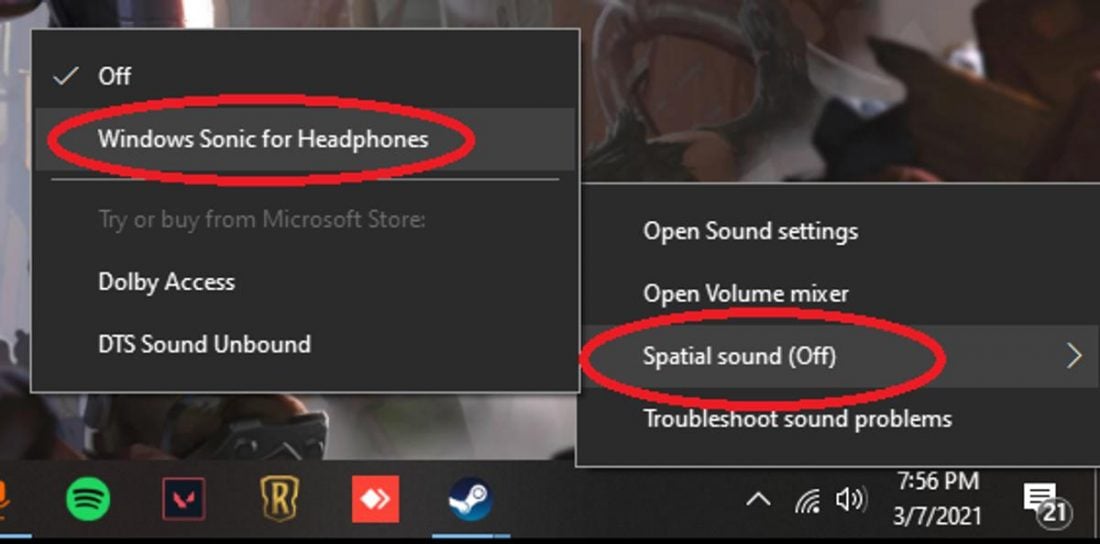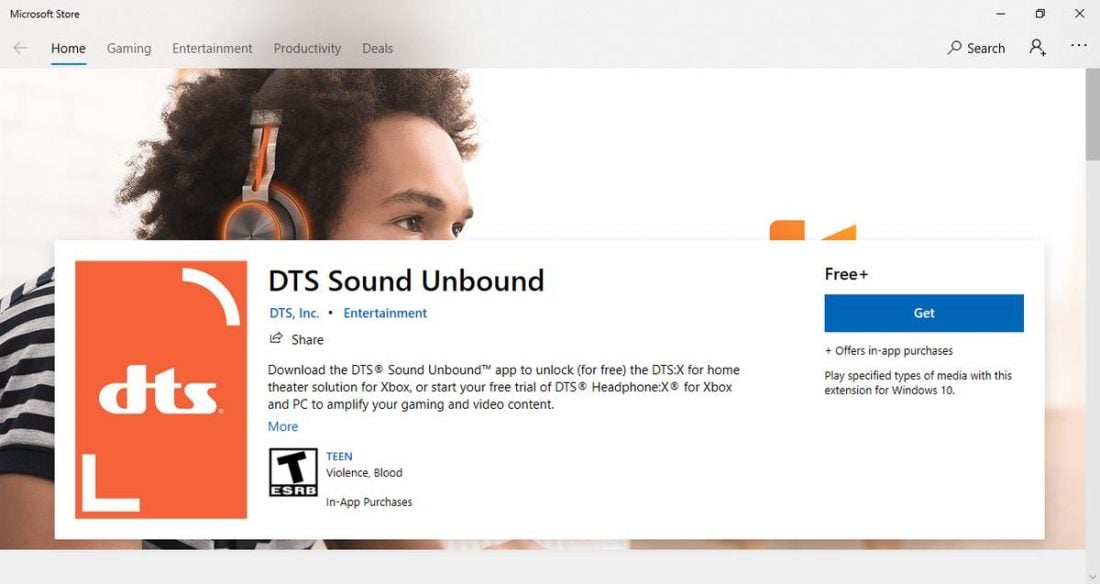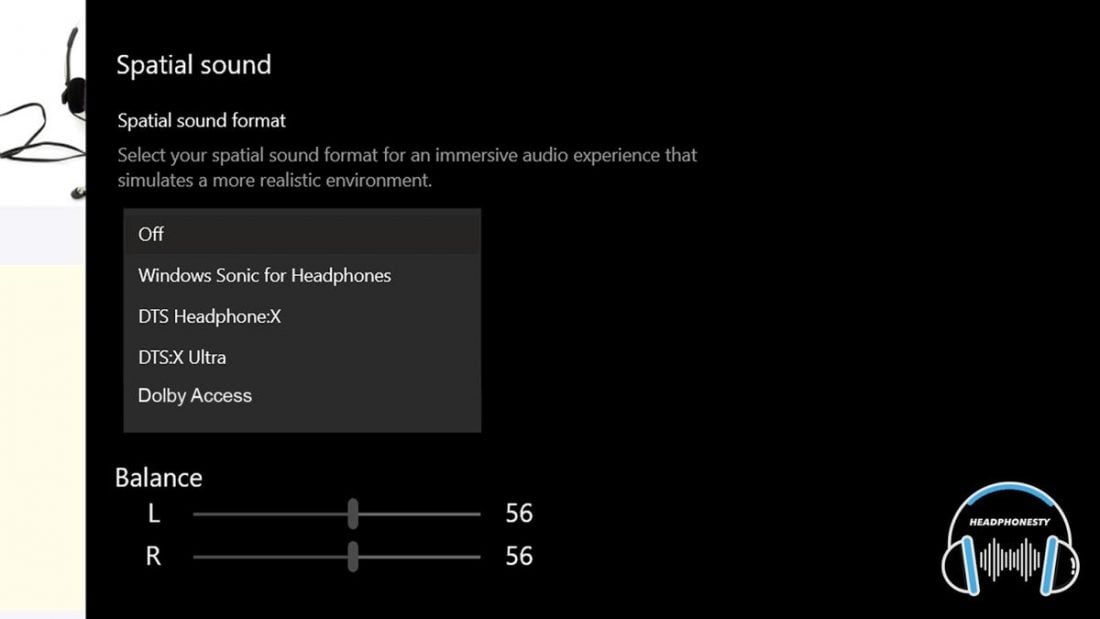In order to enjoy movies and games at their full potential, it’s important that you consider surround sound capabilities. But there are different selections of spatial sound technologies available today. And it’s difficult to determine which one is most suitable for your setup. In addition, there are other factors to consider such as compatibility issues and what specific platform you’re using it on. All this put together can be confusing and can lead to misunderstandings between what can work best. That’s why we made this comparison article that details all you need to know about Windows Sonic, Dolby Atmos, and DTS for headphones.
What Is Spatial Sound?
Spatial sound, sometimes called 3D audio, is an enhanced audio experience where you can perceive sounds from all directions. Instead of just hearing sounds coming from the left/right (stereo sound) or around you (surround sound), spatial sounds add an element of verticality that makes it so that what we hear is close to how we’d naturally hear it in real life. This adds a level of sound immersion that can’t be replicated by traditional surround sound formats. Although we only have two ears, we can often determine the approximate location of sounds in three dimensions. Thanks to the collaborative work between our brain and ears, we can perceive the sound’s distance, elevation, and direction. With that being said, spatial sound softwares makes use of strategic placement of sound sources in a virtual three-dimensional space to create that 3D sound effect. These also try to replicate head-related transfer functions (HRTF). It tells how an ear receives a particular sound and how that sound changes as it passes through the body. The three leading spatial sound softwares today are Windows Sonic, Dolby Atmos, and DTS. Get a better grasp on their differences below.
What Is Windows Sonic for Headphones?
Windows Sonic for Headphones is Microsoft’s attempt at recreating the spatial sound experience for everyone on the Xbox One and Windows 10. It doesn’t have any specific physical equipment and hardware requirements to work. Instead, it uses software and virtual means to function. You could have any pair of earphones or ordinary stereo headphones and still enjoy spatial audio.
Advantages of Windows Sonic for Headphones
There are a number of benefits of using Windows Sonic for Headphones. Here’s what you should know:
It’s FREE: For the absolutely low price of $0, you too can experience spatial sound. You also don’t have to worry about buying expensive equipment since any pair of stereo headphones will do. Simple setup: All you have to do is toggle the function on your computer or Xbox One. That’s it. No need to download separately: Windows Sonic for Headphones comes pre-installed on every Windows 10 and Xbox One.
Disadvantages of Windows Sonic for Headphones
Despite the advantages of Windows Sonic for Headphones, there are still some disadvantages that you should keep in mind. Here’s what you should consider:
Sound can be inaccurate: This spatial sound software only works well in certain situations. It works well with gaming and movies, but can cause audio to sound inaccurate when primarily used for music. Not for speakers: Unsurprisingly, Windows Sonic for Headphones only works well with headphones. Using external/laptop speakers with this software enabled and no headphones plugged in can cause sound distortions in the audio.
What Is Dolby Atmos for Headphones?
Dolby Atmos, developed by Dolby Laboratories, is spatial sound software technology that is available on several platforms such as Windows 10 and Xbox One. It can also be used on any TV, soundbar, or home theater setups. Dolby Atmos and Windows Sonic work very similarly in providing the spatial sound experience. However, the former requires that you buy the software license and specific supported hardware in order to make use of the technology.
Advantages of Dolby Atmos for Headphones
Dolby Atmos has a lot of pros that make it a solid contender for spatial sound software. Be sure to take the following into account:
Disadvantages of Dolby Atmos for Headphones
On the other hand, Dolby Atmos has some downsides that you should consider as well. Here’s what you should take into consideration.
Costs $15: Although there is a 30-day free trial to use Dolby Atmos, you’ll need to pay $14.99 at the end of it to get a license and continue using the software. Requires supported hardware and software for better experience: Although Dolby Atmos can work with any regular pair of headphones through downloading the software, you can improve the experience by using headphones with a built-in Dolby Atmos support. These are usually multi-drivers that mimic the Dolby home theater experience. Set-up may be complex to some: In comparison to Windows Sonic, Dolby Atmos is a lot more complex to set up. From downloading the app to configuring all the PC settings, a lot of tinkering needs to be done just to get it running properly.
What Is DTS for Headphones?
DTS for headphones, sometimes called DTS Headphone X or just DTS:X, is an object-based audio codec. It provides improved spatial sound than other traditional sound systems. DTS software is similar to Dolby Atmos. Yhe main difference is the former compresses audio metadata to a 4:1 ratio while the latter does so to a 10-12:1 ratio. What this means is that DTS, in theory, has more potential in producing higher quality sounds.
Advantages of DTS for Headphones
DTS for headphones is one of the leading spatial sound software in the market. As such, there are some advantages that should make it worth your time.
More realistic sound quality: DTS technology is believed to have the highest quality and most realistic sounds among other spatial sound softwares. This is mainly due to its high data encoding rate and effective use of multi-channel speaker setups. Works great with any headphones and speaker setup: Unlike the limited platform availability of Windows Sonic and the overhead channel requirements of Dolby Atmos, DTS works great with any headphones and simple surround sound multi-speaker setup. Customizable sound: DTS features the ability to fully customize the volume range of voices in movies and games. This is especially useful when you need that boost in dialogue volume at an important part of the movie or cutscene of a video game.
Disadvantages of DTS for Headphones
Despite the advantages of DTS for Headphones, there are still some disadvantages that you should keep in mind. Here’s what you should consider:
Most expensive of the three: You need to make a one-time payment of $19.99 after the two-week free trial in order to make use of DTS:X from the DTS Sound Unbound app. Works best with DTS-supported media: Since it is the newest of the three, not all mainstream media and applications support the DTS audio codec, yet. Only some mainstream video games and 4K Blue-ray movies support it, but this can change in the near future. Almost similar sound to Dolby Atmos: Although DTS can theoretically encode audio at a higher rate than Dolby Atmos for better sound quality, some listeners are unable to distinguish any differences between the two. For casual listeners, it may be much better to go for Dolby Atmos since it is the cheaper option.
Windows Sonic vs. Dolby Atmos vs. DTS: Which One’s for You?
There isn’t an end all be all answer to this question. Determining which one is the best is highly subjective and requires that you take many factors into consideration. People may say that one is better than the other, but the best way to find out for yourself is to carefully listen to the audio. With that, you can make the most informed decision.
For people on a budget
When it comes to general costs, there’s no doubt that Windows Sonic is the winner in this aspect. Coming pre-installed and accessible on every Windows 10 PC and Xbox One, almost anyone can make use of this spatial sound technology. However, if you want to have 3D sound outside of those platforms, then Dolby Atmos is the one for you. You only need to make a one-time payment of $15 to enjoy spatial surround sound on your headphones or home theater setup.
For gaming
When it comes to gaming, the debate is heated between Dolby Atmos and DTS. The short answer? Both will greatly improve your gameplay by providing more immersive 3D audio. However, most gamers believe that DTS is the best for gaming. This is mainly due to the expanded sound and spacious profile that DTS provides especially on headphones. This isn’t saying that Dolby Atmos or Windows Sonic fail to achieve this, it’s just that DTS has a more noticeable effect. Yet, if you already have gaming headphones with built-in surround sound, these won’t matter since using spatial sound software with surround sound headphones will distort the audio.
For movies
For the best spatial sound experience
As mentioned earlier, choosing the best spatial sound technology is highly dependent on your specific needs and personal preferences. It’s best to take all other factors into consideration so that you can determine which one is the right one for you. To get a better idea, put on your headphones and listen to this comparison video that showcases the three spatial sound software we’ve discussed.
How to Activate These Virtual Surround Sound Softwares
There are different ways to activate these surround sound softwares and each is highly dependent on what platform you’re using them on. However, it’s good to know that the 3 can all work on PC and Xbox One. Check out our article for a detailed look at how to activate Windows Sonic, Dolby Atmos, and DTS.
Conclusion
Watching movies and playing games with virtual 3D sound is an experience like no other. The organic movement of sound adds a whole level of immersion that vastly improves the overall experience. With this article you should now be able to take all factors into consideration and find out which spatial software technology is right for you. Keep in mind that seeing hearing is believing. So take the time to listen to comparison videos in order to get a better feel of which system you’d prefer more. We hope this article helped you in understanding these spatial sound technologies. If you have a preference between the three, please let us know in the comments down below. We’d love to have a discussion and hear what you have to say!






